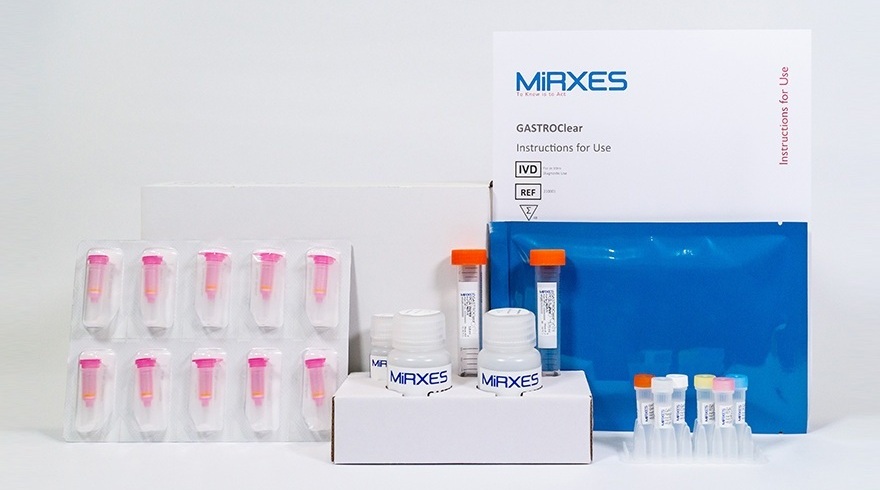Hair Testing May Offer Insights into Asthma-Related Complications in Pregnancy
|
By LabMedica International staff writers Posted on 28 Jul 2015 |
In an oral poster presentation of the “Endocrinology in Preventive and Chronic Care” session at AACC 2015 (July 26-30; Atlanta, GA, USA), researchers presented and discussed results of a study suggesting that simple, noninvasive testing of hair samples may offer new insights into the relationship between asthma, levels of the stress-hormone cortisol, and related complications in pregnancy.
Currently, researchers would require frequent blood or saliva samples to measure and track cortisol levels during pregnancy. In addition to being time consuming, these measurements are difficult to interpret as they reflect only one point in time. Cortisol fluctuates during the day. Hair, on the other hand, stores cortisol levels over a long period of time. Each segment of about 1 cm offers a look back at what the levels were during a particular month.
To investigate whether hair samples could be used to assess effects of the chronic inflammatory lung disease asthma on cortisol levels during pregnancy, a research team led by Gideon Koren, MD, University of Toronto (Canada), and Bruce Carleton, PharmD, University of British Columbia (Canada), tested for cortisol in hair samples from 93 pregnant women, of whom 62 had asthma and 31 did not. About half the women with asthma were being treated with inhaled corticosteroids.
“For both the control and the asthma groups we could see a rise in cortisol over the course of the pregnancy and then a decline during the postpartum period,” said study coauthor Laura Smy, PhD student, University of Toronto (Canada). This finding supports the use of hair samples as a tool for assessing cortisol levels during pregnancy.
The study also made an unanticipated finding, however. “For the individuals with asthma, whether or not they were using inhaled corticosteroids, their response to the cortisol increase was dampened,” said Smy, “They had significantly lower hair cortisol levels during both their 2nd and 3rd trimesters than the women in the control group.” The finding suggests that levels of cortisol tend to be lower among pregnant women with asthma. This may be due to “adrenal fatigue”—prolonged exposure to high cortisol levels that eventually causes the adrenal glands to significantly reduce their output of the hormone.
While research has established that high cortisol levels are associated with an elevated risk of miscarriage and premature birth, some increase during pregnancy may have a beneficial effect. Indeed, research suggests that higher cortisol levels late in pregnancy are needed for fetal organs to mature, especially the lungs, thyroid, and digestive tract. The new study offers a simpler tool that could help scientists unravel this complicated relationship and determine if and how cortisol is linked to pregnancy outcomes.
“We hope hair samples will help establish the role that changes in cortisol levels throughout pregnancy have on the health of women and their children,” said Smy. Future research will be needed to both confirm this study’s findings and to determine the role that changes in cortisol during pregnancy may have on pregnancy outcomes and fetal wellbeing.
Related Links:
American Association for Clinical Chemistry (AACC)
AACC 2015 Annual Meeting & Clinical Lab Expo
Currently, researchers would require frequent blood or saliva samples to measure and track cortisol levels during pregnancy. In addition to being time consuming, these measurements are difficult to interpret as they reflect only one point in time. Cortisol fluctuates during the day. Hair, on the other hand, stores cortisol levels over a long period of time. Each segment of about 1 cm offers a look back at what the levels were during a particular month.
To investigate whether hair samples could be used to assess effects of the chronic inflammatory lung disease asthma on cortisol levels during pregnancy, a research team led by Gideon Koren, MD, University of Toronto (Canada), and Bruce Carleton, PharmD, University of British Columbia (Canada), tested for cortisol in hair samples from 93 pregnant women, of whom 62 had asthma and 31 did not. About half the women with asthma were being treated with inhaled corticosteroids.
“For both the control and the asthma groups we could see a rise in cortisol over the course of the pregnancy and then a decline during the postpartum period,” said study coauthor Laura Smy, PhD student, University of Toronto (Canada). This finding supports the use of hair samples as a tool for assessing cortisol levels during pregnancy.
The study also made an unanticipated finding, however. “For the individuals with asthma, whether or not they were using inhaled corticosteroids, their response to the cortisol increase was dampened,” said Smy, “They had significantly lower hair cortisol levels during both their 2nd and 3rd trimesters than the women in the control group.” The finding suggests that levels of cortisol tend to be lower among pregnant women with asthma. This may be due to “adrenal fatigue”—prolonged exposure to high cortisol levels that eventually causes the adrenal glands to significantly reduce their output of the hormone.
While research has established that high cortisol levels are associated with an elevated risk of miscarriage and premature birth, some increase during pregnancy may have a beneficial effect. Indeed, research suggests that higher cortisol levels late in pregnancy are needed for fetal organs to mature, especially the lungs, thyroid, and digestive tract. The new study offers a simpler tool that could help scientists unravel this complicated relationship and determine if and how cortisol is linked to pregnancy outcomes.
“We hope hair samples will help establish the role that changes in cortisol levels throughout pregnancy have on the health of women and their children,” said Smy. Future research will be needed to both confirm this study’s findings and to determine the role that changes in cortisol during pregnancy may have on pregnancy outcomes and fetal wellbeing.
Related Links:
American Association for Clinical Chemistry (AACC)
AACC 2015 Annual Meeting & Clinical Lab Expo
Latest AACC 2015 News
- Automated Molecular Diagnostics System Presented at AACC 2015
- Portable Molecular Diagnostics System Unveiled At 2015 AACC
- Expanded Steroid Control Launched at the 2015 AACC Annual Meeting
- Innovative New Technology to Provide Plastic-Exterior Components with Glass Interior, Presented at AACC 2015
- Eco-Friendly Immunoassay Reagents Featured at AACC 2015
- Low Cost Point-of-Care DNA Amplification Test for Chlamydia Infection Demonstrated at the 2015 AACC Annual Meeting
- Inexpensive Multipurpose Point-of-Care Analyzer Unveiled at 2015 AACC Annual Meeting
- State-of-the-Art Automated Laboratory Systems Highlighted at the 2015 AACC Annual Meeting
- Siemens Showcases Multiple New IVD Solutions at AACC 2015
- New HPLC Quadruples Clinical Throughput Capabilities, Displayed at AACC 2015
- Diagnostic Test that Measures Active Renin in Hypertension Displayed at the 2015 AACC Annual Meeting
- Two Newly Developed Tests May Better Diabetes Diagnosis and Monitoring
- CE Marking of Theranostic Monitoring Test Announced at 2015 AACC Annual Meeting
- Ebola Rapid Lateral Flow Test Previewed at the 2015 AACC Annual Meeting
- AACC: Better Quality and Patient-Friendliness Needed in Direct Testing
- Clinical Chemistry Instruments and Reagents Under Scrutiny at the 2015 AACC Annual Meeting
Channels
Clinical Chemistry
view channel
Chemical Imaging Probe Could Track and Treat Prostate Cancer
Prostate cancer remains a leading cause of illness and death among men, with many patients eventually developing resistance to standard hormone-blocking therapies. These drugs often lose effectiveness... Read more
Mismatch Between Two Common Kidney Function Tests Indicates Serious Health Problems
Creatinine has long been the standard for measuring kidney filtration, while cystatin C — a protein produced by all human cells — has been recommended as a complementary marker because it is influenced... Read moreMolecular Diagnostics
view channel
Blood Protein Profiles Predict Mortality Risk for Earlier Medical Intervention
Elevated levels of specific proteins in the blood can signal increased risk of mortality, according to new evidence showing that five proteins involved in cancer, inflammation, and cell regulation strongly... Read more
First Of Its Kind Blood Test Detects Gastric Cancer in Asymptomatic Patients
Each year, over 1 million people worldwide are diagnosed with gastric (stomach) cancer, and over 800,000 people die of the disease. It is among the top 5 deadliest cancers worldwide for both men and women.... Read moreHematology
view channel
Platelet Activity Blood Test in Middle Age Could Identify Early Alzheimer’s Risk
Early detection of Alzheimer’s disease remains one of the biggest unmet needs in neurology, particularly because the biological changes underlying the disorder begin decades before memory symptoms appear.... Read more
Microvesicles Measurement Could Detect Vascular Injury in Sickle Cell Disease Patients
Assessing disease severity in sickle cell disease (SCD) remains challenging, especially when trying to predict hemolysis, vascular injury, and risk of complications such as vaso-occlusive crises.... Read more
ADLM’s New Coagulation Testing Guidance to Improve Care for Patients on Blood Thinners
Direct oral anticoagulants (DOACs) are one of the most common types of blood thinners. Patients take them to prevent a host of complications that could arise from blood clotting, including stroke, deep... Read moreImmunology
view channel
Gene Signature Test Predicts Response to Key Breast Cancer Treatment
DK4/6 inhibitors paired with hormone therapy have become a cornerstone treatment for advanced HR+/HER2– breast cancer, slowing tumor growth by blocking key proteins that drive cell division.... Read more
Chip Captures Cancer Cells from Blood to Help Select Right Breast Cancer Treatment
Ductal carcinoma in situ (DCIS) accounts for about a quarter of all breast cancer cases and generally carries a good prognosis. This non-invasive form of the disease may or may not become life-threatening.... Read moreMicrobiology
view channel
Rapid Assay Identifies Bloodstream Infection Pathogens Directly from Patient Samples
Bloodstream infections in sepsis progress quickly and demand rapid, precise diagnosis. Current blood-culture methods often take one to five days to identify the pathogen, leaving clinicians to treat blindly... Read more
Blood-Based Molecular Signatures to Enable Rapid EPTB Diagnosis
Extrapulmonary tuberculosis (EPTB) remains difficult to diagnose and treat because it spreads beyond the lungs and lacks easily accessible biomarkers. Despite TB infecting 10 million people yearly, the... Read more
15-Minute Blood Test Diagnoses Life-Threatening Infections in Children
Distinguishing minor childhood illnesses from potentially life-threatening infections such as sepsis or meningitis remains a major challenge in emergency care. Traditional tests can take hours, leaving... Read more
High-Throughput Enteric Panels Detect Multiple GI Bacterial Infections from Single Stool Swab Sample
Gastrointestinal (GI) infections are among the most common causes of illness worldwide, leading to over 1.7 million deaths annually and placing a heavy burden on healthcare systems. Conventional diagnostic... Read morePathology
view channel
AI Tool Rapidly Analyzes Complex Cancer Images for Personalized Treatment
Complex digital biopsy images that typically take an expert pathologist up to 20 minutes to assess can now be analyzed in about one minute using a new artificial intelligence (AI) tool. The technology... Read more
Diagnostic Technology Performs Rapid Biofluid Analysis Using Single Droplet
Diagnosing disease typically requires milliliters of blood drawn at clinics, depending on needles, laboratory infrastructure, and trained personnel. This process is often painful, resource-intensive, and... Read moreTechnology
view channel
AI Saliva Sensor Enables Early Detection of Head and Neck Cancer
Early detection of head and neck cancer remains difficult because the disease produces few or no symptoms in its earliest stages, and lesions often lie deep within the head or neck, where biopsy or endoscopy... Read more
AI-Powered Biosensor Technology to Enable Breath Test for Lung Cancer Detection
Detecting lung cancer early remains one of the biggest challenges in oncology, largely because current tools are invasive, expensive, or unable to identify the disease in its earliest phases.... Read moreIndustry
view channel
Abbott Acquires Cancer-Screening Company Exact Sciences
Abbott (Abbott Park, IL, USA) has entered into a definitive agreement to acquire Exact Sciences (Madison, WI, USA), enabling it to enter and lead in fast-growing cancer diagnostics segments.... Read more








 assay.jpg)
















